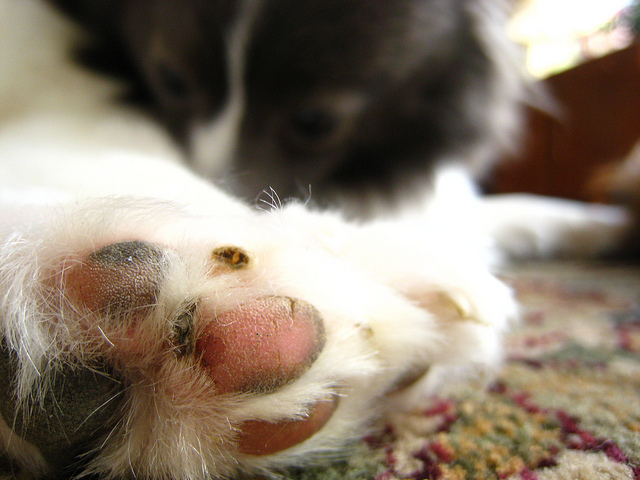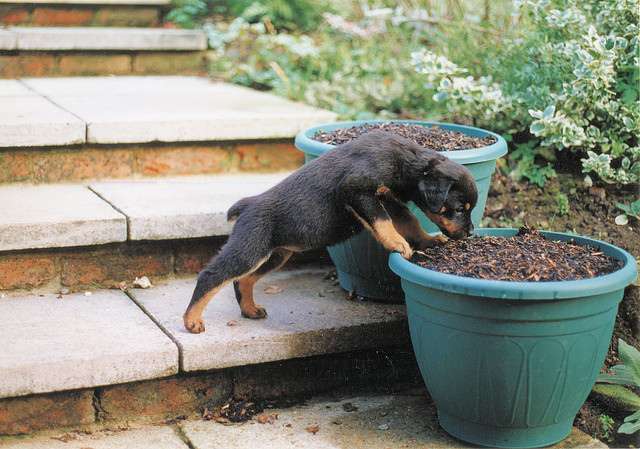You may not think your dogs feet need any care or protection but they do. Many dogs paws take a beating due to their active lifestyles and need even more care and protection.
Keep your doggies paws perfect and healthy with the following 10 tips:
- Pamper With Pedicures: Your dog’s nails should just about touch the ground when she walks. If her nails are clicking or getting snagged on the floor, it’s time for a pedicure.
- Snip and Trim: Trim paw hair regularly to avoid painful matting. Simply comb hair out, especially from between the toes, and trim even with the pads.
- Clean In Between: Foreign objects can become lodged in your dog’s pads. Check regularly between toes for foxtails, pebbles, small bits of broken glass and other debris.
- Moisturize, Moisturize, Moisturize: A dog’s pads can become cracked and dry. Ask your veterinarian for a good pad moisturizer and use as directed. Avoid human hand moisturizer, as this can soften the pads and lead to injury.
- Deep Paw Massage: Similar to giving a human hand massage, a paw massage will relax your dog and promote better circulation. Start by rubbing between the pads on the bottom of the paw, and then rub between each toe.
- Slow and Steady: If you’re about to begin a new exercise program with your dog, start off slow. Paws may become sensitive, chaffed or cracked, particularly when starting your dog out on hikes and runs.
Apply First Aid: It’s not unusual for dogs to suffer cuts or other wounds from accidentally stepping on glass, debris or other objects. Wounds that are smaller than a half inch in diameter can be cleaned with an antibacterial wash and wrapped with a light bandage.
- Summertime Sores: Imagine stepping barefoot onto hot pavement. Ouch! It is important to remember your dog’s paws feel heat extremes, too. To prevent burns and blisters, avoid walking your dog on hot pavement or sand. Signs include blisters, loose flaps of skin and red, ulcerated patches. For minor burns, apply antibacterial wash and cover the paw with a loose bandage.
- Wintertime Blues: Winter is hard on everyone’s skin, even your dog’s! Bitter cold can cause chapping and cracking. Rock salt and chemical ice melters can cause sores, infection and blistering. Toxic chemicals can also be ingested by your dog when he licks his paws. After outdoor walks, wash your dog’s paws in warm water to rinse away salt and chemicals. You may wish to apply Vaseline, a great salt barrier, to the foot pads before each walk—or make sure your dog wears doggie booties.
- Practice Prevention: To reduce the risk of injury, keep your home and yard clear of pointy bits and pieces. Be conscious to avoid hazards such as broken glass and other debris when walking your dog.
If your dog ever gets a deep cut or severe burn take them to the vet as soon as possible. It is also good to stick to this rule, if you wouldn’t walk on it barefoot, your dog shouldn’t either. It is also good to avoid black top during the summer. You can always feel the ground and decide if it is too hot before subjecting your poor pup to it. They can’t tell you that it is too hot and they will try to tough it put just to make you happy.
Do you have any other tips or advice to add that all dog owners should be aware of or be checking for?




Leave a Reply